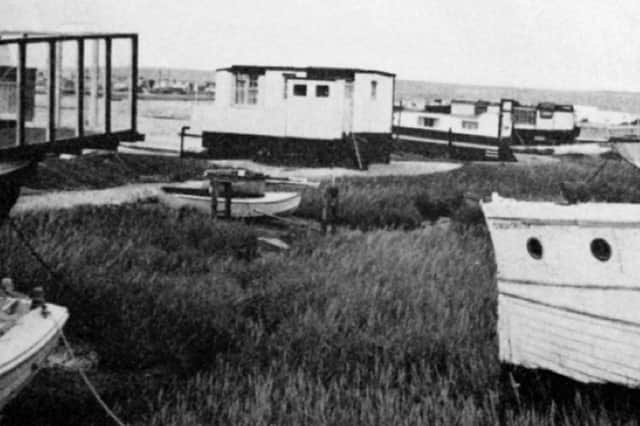From Leigh Park to a house boat at Hayling Island | Nostalgia


The News articles about the Hayling Island ferry (Saturday June 27, 2020) and Leigh Park remembered (Friday January 29, 2021) brought back memories of a rather unusual use of the ferry that my mother arranged in the mid-1950s.
The story starts, strangely, in the middle of what became Leigh Park housing estate.
Advertisement
Hide AdAdvertisement
Hide AdOne of the estate’s builders, a Mr Figgins, had for reasons unknown, purchased a number of pontoons as post-war army surplus.
My mother spotted these during a walk in the Park and on a whim she approached the builder and asked if they were for sale.
I guess the builder could not believe his luck and he agreed to sell them at a knock-down price.
Mum bought two on the spot on the understanding that they would be delivered to a place of her choosing.
Advertisement
Hide AdAdvertisement
Hide AdWhen dad arrived home from work she proudly told him of her ‘bargain’ and that she wanted him to make a houseboat of them.
Not having the faintest idea where this ‘boat’ was going to be sited, but knowing that the pontoons had to be moved quickly under the conditions of sale, a finger on the map identified the beach approaching ferry pontoons at Eastney.
Mr Figgins promptly delivered the goods to Eastney on the back of two low loaders.
Not having thought how they were going to be removed from the lorries – no crane available – mother went over to, what was then, the guardhouse at the adjacent Fort Cumberland army unit with her begging bowl.
Advertisement
Hide AdAdvertisement
Hide AdThe duty officer hit upon the idea of using the offload task as a team challenge for his troop.
Dad, who was waiting by the lorries, was surprised to see a group of squaddies marching toward him – led by mother!
After much discussion the squaddies’ decision, led by an increasingly exasperated lorry driver, was to push the pontoons off the back of the lorries.
This was duly accomplished and they were dropped on to the stony beach and, inevitably, were holed in many places.
Advertisement
Hide AdAdvertisement
Hide AdDad then spent many a ‘happy’ hour patching the holes with plywood and dope ‘obtained’ from his works – the De Havilland Aircraft factory.
It had become clear that the newly-repaired ‘boats’ could not remain where they had landed. Mother had rather taken to The Kench on Hayling Island and decided this is where they were going.
How to get them there?
Mother again. A friendly smile to the skipper of the Hayling Ferry soon persuaded him to tow the pontoons across the harbour entrance and round into The Kench.
On the said day at high water the pontoons were floated for the first time and roped to the ferry with dad, the proud skipper, on-board the pontoons.
Advertisement
Hide AdAdvertisement
Hide AdExcitedly we watched from the shore as he departed to our future holiday home on the island.
Dad’s failures as a boat repairman soon became apparent as the pontoon he was standing on began to sink!
By midstream he was up to his ankles and was forced to jump to the second pontoon which appeared less likely to turn into a submarine.
By the time the convoy reached The Kench dad, once again, was in danger of becoming a submarine captain.
Advertisement
Hide AdAdvertisement
Hide AdThe ferry master, by now realising the error of his benevolent ways, had had enough and cast off his tenders – and dad.
Left alone, all at sea but close to shore, dad sat in his semi-submersible and drifted slowly to the nearest shore – which is where we remained for many years and happy holidays on Noddy.
Dad managed to retrieve the pontoons and bolted the two together and, using bits ‘obtained’ from De Havilland and built the Noddy you see in the picture.
After many happy years holidaying on her dad was given notice by Havant Council to remove her, along with the other boats that had pitched up along the shore.
She could not float so the decision was made to burn her on the spot.
Because she was constructed mainly of aircraft wood and treated with aviation dope her cremation was something to behold.
Comment Guidelines
National World encourages reader discussion on our stories. User feedback, insights and back-and-forth exchanges add a rich layer of context to reporting. Please review our Community Guidelines before commenting.